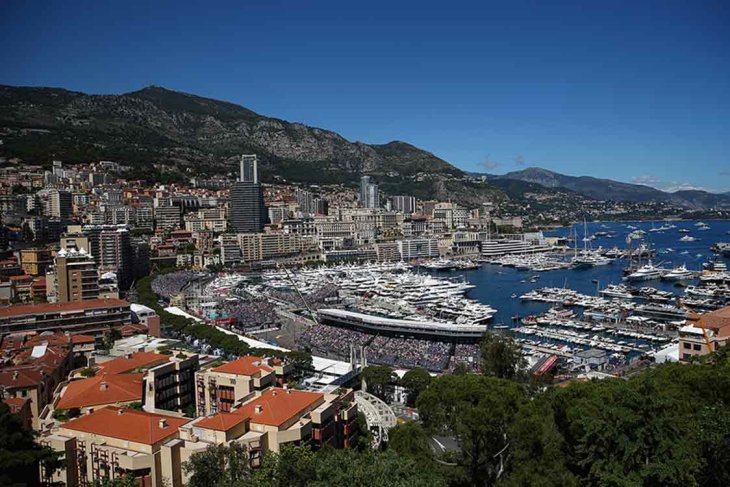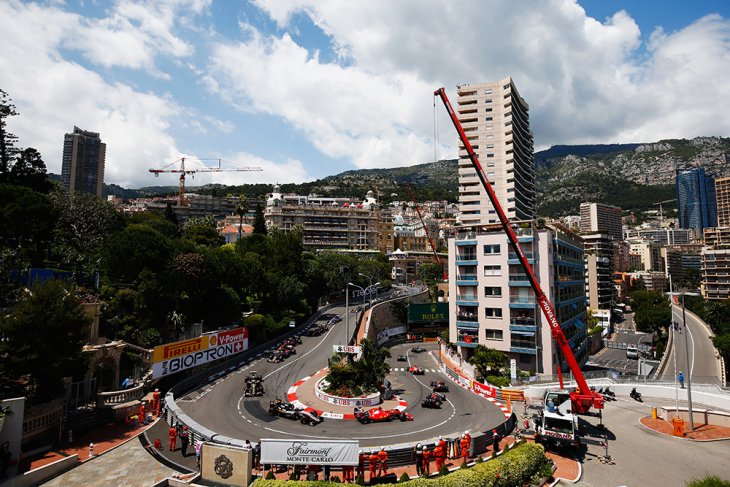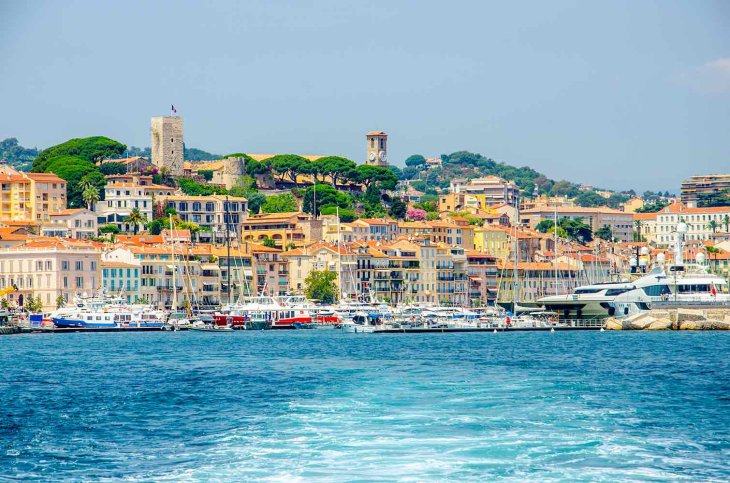
Monaco, Nice and Cannes are part of the Mediterranean coastline of the southeast corner of France and is one of the country's most popular tourist destinations, commonly known as the French Riviera.
The French Riviera was arguably one of the world's first modern resort areas, although it has also been a popular with a plethora of artists and writers, including Pablo Picasso, Henri Matisse, Edith Wharton, Somerset Maugham, and Aldous Huxley, as well as wealthy Americans and Europeans.
Officially, the area is home to 163 nationalities with 83,962 foreign residents, making it a truly international part of France.
Currency
As with the rest of Europe, France has adopted the Euro, with €1 equating to around £0.8.
Customs
When meeting new people in France it is important to get your greeting right. Kissing provides plenty of pitfalls for foreign visitors. The best thing to do is to take your cue from the natives and follow their lead. It isn't advisable to kiss when first introduced to an adult, but young children will expect to be kissed. It's also worth noting that men kiss women and women kiss women but men don’t kiss men, unless they’re relatives or very close friends.
If you are attempting to speak French, it is best to use the formal form of address (vous). Only use the familiar form (tu/toi) or Christian name when you’re invited to do so.
Monaco

The principality of Monaco is a sovereign city-state and microstate with a population of around 37,800, making it the second-smallest and most densely populated country in the world.
Governed by a form of constitutional monarchy with Prince Albert II as its head of state, Monaco has understandably earned itself a reputation for being a draw for the super-rich, with an estimated 30 per cent of its population claiming to be millionaires.
Monaco's impressive economic development was spurred in the late 19th century with the opening of the country's first casino, Monte Carlo, and a railway connection to Paris.
Recent years have also seen Monaco become a major banking centre, with low business taxes and no income tax.
Monaco's luxury is there for all to see during the annual street circuit motor race, the Monaco Grand Prix, one of the original Grands Prix of Formula One.
What to see
One of the best things to do in Monaco is to arrive in style. A helicopter ride from Nice airport may sound like something out of a Bond film, but is nevertheless popular with many tourists, although it is quite pricey.
Another popular place is the Oceanographic Museum and Aquarium, which since 1910 has been perched like a palace on top of a 280ft cliff.
Famous deep-diving explorer Jacques Cousteau was a former director here and that expertise has continued to this day with members of staff priding themselves on being leading authorities on the troubled Mediterranean and tropical marine eco-systems.
Head to the basement tank, fed with seawater, and you get a good understanding of how officials are trying to create a coral reef. Meanwhile, those heading up to the roof can be treated to some immense views.
Where to drink
Jimmy'z has probably been the most iconic beacon of Monaco's hip and often exclusive nightlife for the last 40 years or more.
If you fancy sharing the dancefloor with a celebrity, then this is your best chance, although drinks prices are eye-wateringly high and a night out in here could cost well in excess of €300.
Another night-time institution is the Living Room, which offers an interesting mix of English country salon and disco with expertly handled sounds. Punters can even enjoy decent light food within a sophisticated attitude suitable for those not in the first flush of youth and a heated, year-round terrace.
Nice

The fifth-most populated city, Nice is the capital of the Alpes Maritimes département and contains a population of around one million.
Located in the picturesque Côte d'Azur area on the south-east coast of France on the Mediterranean Sea, Nice is the second-largest French city on the Mediterranean coast.
Known as "Nice la Belle", which means "Nice the Beautiful", the city has always been a popular destination for tourists from all over the world.
Having served as a strategically-placed port, Nice has always been a city built on maritime strength. The coastal backdrop means it offers a mild Mediterranean climate that proved popular with English upper classes in the second half of the 18th century.
Its enduring popularity means it is currently one of France's most visited cities and receives four million tourists every year. It also has the busiest airport outside of Paris.
What to see
It might be hard to believe, but there's more to Nice than just lazy strolls along the French Riviera and lying on the beach.
Those with an appreciation for the arts will be right at home here, with Nice boasting a healthy mix of old and new eras of fine art. There is the contemporary Musée d'Art Moderne et d'Art Contemporain, which is home to a large permanent collection that features a good showing from the Nice School, New Realism and Pop Art. Meanwhile, the Musée Matisse houses a huge number of works by the artist of the same name, paintings, drawings, engravings and personal effects in the serene surroundings of a 17th-century villa.
The locals also know how to relax, with the city abounding with spas and wellbeing centres that help to relax and rejuvenate visitors, with the practice of 'choco-cooning' proving particularly popular. The practice involves rolling around in creamy ganache and melted chocolate. This is, however, only one of the 80-strong treatments available at La Bulle d'Isis.
If you're looking for something a little more lively, then there's the music venues the Acropolis and Théâtre Lino Ventura, which both pull in the usual big names, along with some more underground hip hop and electronic music outfits. The very biggest gigs tend to take place at Palais Nikaïa or at open-air venues out of town.
Where to drink
Alongside everything else, Nice is also known for its impressive array of wine bars, restaurants and nightlife spots.
La Part des Anges stocks bottles from many of the country's best wine producers, while at the knowledgeably staffed bistro à vins Vin/Vin, you can visit the temperature-controlled cellar with an expert on hand to help you select your bottle.
Arguably the most stylish wine bar is La Cave de l'Origine, which becomes very crowded at mealtimes with French and foreigners alike, all of whom are drawn to the establishment's uncommon selection of wines. Other highlights for wine lovers include Le Bistrot d'Antoine, Resto Wine Notes, and the long established Cave de la Tour.
For something a little more lively there's Ôdace, which with its sleekly appointed bar, restaurant and dance floor is very much a place to be seen in Nice. In contrast, the sweaty little Blue Moon club is the place to be for a pumping mix of house and handbag anthems.
Cannes

Home to the annual Cannes Film Festival, Midem, and Cannes Lions International Festival of Creativity, Cannes has always been known for its association with the rich and famous.
The city contains a number of luxury hotels and restaurants, and has even hosted some of the most high-profile conferences in the world.
What to see
La Croisette is a wonderful winding promenade that oozes tranquility and, when the film festival is on, a lot of glamour. The sparkling acreage of briny sea out front and exotic greenery on the prom itself is enough to leave any visitor feeling like a movie star.
Speaking of the festival, the Palais des Festivals is worth a visit for any film fan, with the ide of the building containing the hand-prints of various movie stars, although these are gradually being replaced by stainless steel.
If you are looking for a small taste of how Cannes used to be and its history as a small fishing village, then head over to Suquet hill. This area of the city rises sharply from port and contains a labyrinth of bars, restaurants and shops selling mainly inessentials.
While many of the purists will claim the area has seen a dramatic change, there is little doubt that Le Suquet retains a certain atmosphere. Visit in the morning or very late at night and visitors can still get a sense of the place and of the close-knittedness of lives lived there.
Where to drink
Much like the other destinations on the French Riviera, gambling is a big part of the nightlife in Cannes, with no less than three casinos to choose from. But there's little doubt that the epicentre of Cannes nightlife is the Rue Commandant André and its surrounding streets. The district, between La Croisette and the Rue d’Antibes is bustling with a large number of restaurants, bars and nightclubs.

